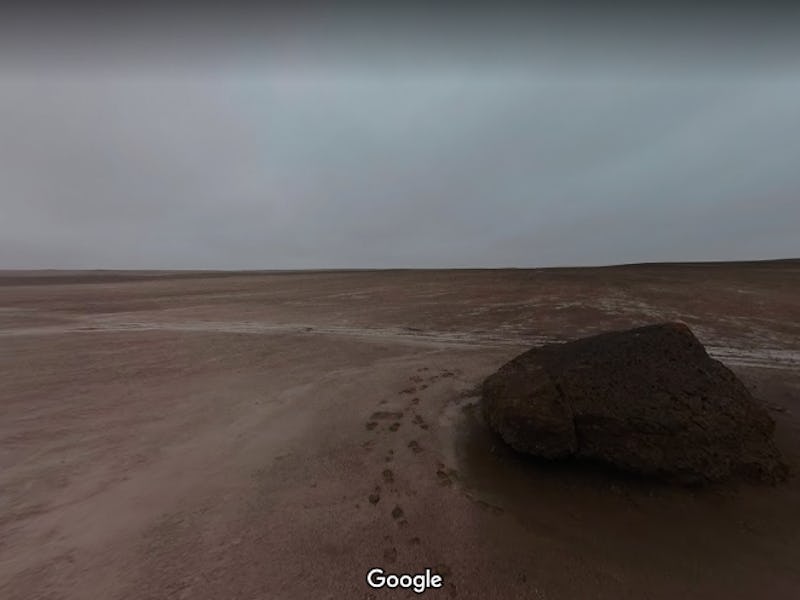The Island That Mimics Mars Now On Google Street View
Dads who just got an iPad everywhere are rejoicing.

The world’s largest uninhabited island, so isolated and otherworldly it’s used by NASA to run Mars exploration tests, is now on Google Street View. Dads who just got an iPad everywhere are rejoicing.
On Monday morning, the SETI Institute announced a new collaboration between Google and the NASA Haughton-Mars Project (HMP), with the goal of continuing Mars experiments on the Canadian, high Arctic Devon Island. SETI, a nonprofit scientific research institute, collaborates with a number of leaders in space exploration, including NASA Headquarters and the National Science Foundation. Their HMP initiative operates out of a research facility on the 21,000 square foot Devon Island, testing potential hazards stemming from isolation. It’s the largest privately-operated polar research station in the world.
The partnership announcement was accompanied by a series of data-driven releases: a 10 minute documentary filmed exclusively on a Google Pixel 3, a Google Earth guided tour, and Google Street View imagery of the Island.
Astronaut Canyon, one of the Devon Island vistas now available on Google Street View.
“They allow us to share with the world some of the Mars-like wonders of the site and the fieldwork that we do,” wrote planetary scientist and HMP director Pascal Lee in a recent press release.
For over two decades, the NASA HMP has allowed researchers and scientists to utilize the unique characteristics of Devon Island — freezing temperatures, remoteness, barren terrain and the brutal arctic day and night cycle — to test a variety of Mars exploration factors. From restricted communications to vehicular testing to long-term isolation trials that mimic a space flight to Mars, the NASA HMP has contributed countless amounts of data to NASA’s Mars research, whose next big step is the landing of the Mars 2020 Rover.
But despite the phrase “Mars exploration” being increasingly featured in headlines, most folks probably don’t realize there’s much more to the goal of “humans on Mars” than just “Elon Musk would like to do it.”
So in August of 2018, a Google team joined HMP’s summer field campaign as an Education and Public Outreach partner. The team spent months capturing footage that’s now available to the public on Google’s Street View and in their new documentary, focusing on the day-to-day routine of HMP researchers amid the “magnificent desolation” of Devon Island. The goal of the projects was to raise awareness of the similarities between Devon Island and Mars, accompanying facts with heart-stopping imagery.
And seeing some of the vistas of Devon Island, from “Astronaut Canyon,” whose red hills are cut through with icy blue water, to the achingly flat Von Braun Plantitia, an ancient lake bed, you begin to wonder what it would be like to really on Mars, to live in a colony, to be greeted every day with the same stunningly barren views. You become homesick for Earth, even though you’re still right here.